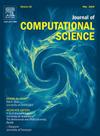双生境系统中恐惧触发的物种迁移同步
IF 3.1
3区 计算机科学
Q2 COMPUTER SCIENCE, INTERDISCIPLINARY APPLICATIONS
引用次数: 0
摘要
我们使用修正版的Hastings-Powell模型研究了双生境系统的动力学,揭示了系统内的复杂行为。在第一个栖息地,两种捕食者捕食猎物,顶级捕食者是一种杂食动物,它既捕食中级捕食者,也捕食猎物。相比之下,第二种栖息地的特点是一个单独的捕食者追逐猎物,这些猎物受到避难所(安全区)的保护,并受到Allee效应(猎物在低密度下生长速度下降的现象)的影响。在第一个栖息地,我们将两种捕食者的存在所引起的恐惧效应纳入到猎物的出生率中,从而降低了它的生长速度。我们研究了系统的正性、有界性、耗散、分岔和消光情况,以及参数分析和混沌表征。我们的分析表明,对中间捕食者的恐惧会导致系统动力学的永久变化,而对顶级捕食者的恐惧会导致系统动力学从稳定转向混沌。我们引入了一个线性迁移函数来耦合两种栖息地,其中物种从受恐惧影响的栖息地迁移到受避难所和Allee效应影响的猎物生长的栖息地。利用奇异摄动理论和Tikhonov定理,分析了系统在迁移速率趋于无穷时的行为。本研究特别侧重于调查不同维度的迁移水平如何影响栖息地之间的物种同步。我们对耦合维数系数(CDC)的每种可能情况进行了测试,以确定生境可持续性的最佳耦合方案。代替传统的正弦函数,我们使用余弦函数来测量相对相位作为同步指示器。通过数值模拟验证了我们的研究结果,表明双生境系统中的生态平衡可以通过单物种迁移来实现。此外,避难所和通道效应的存在支持物种实现同步。本文章由计算机程序翻译,如有差异,请以英文原文为准。
Species migration induced by fear triggers synchrony in two-habitat system
We study the dynamics of a dual-habitat system using modified versions of the Hastings–Powell model, revealing the complex behavior within the system. In the first habitat, two predators hunt prey, with the top predator being an omnivore that hunts both the intermediate predator and the prey. In contrast, the second habitat features a solitary predator chasing prey that are protected by refugia (safe zones) and influenced by the Allee effect (a phenomenon where a prey’s growth rate decreases at low densities). In the first habitat, we incorporate the fear effect induced by the presence of both predators into the prey’s birth rate, reducing its growth. We study the system’s positivity, boundedness, dissipation, bifurcation, and extinction scenarios, alongside parameter analysis and chaos characterization. Our analysis shows that the fear of the intermediate predator causes a permanent shift in the system’s dynamics, while fear of the top predator leads to a shift from stable to chaotic dynamics. We introduce a linear migration function to couple both habitats, where species migrate from the habitat affected by fear to the one where prey growth is influenced by refugia and the Allee effect. Using singular perturbation theory and Tikhonov’s theorem, we analyze the system’s behavior as the migration rate approaches infinity. This study particularly focuses on investigating how varying migration levels across dimensions affect species synchrony between habitats. We test each possible case of the coupling dimension coefficient (CDC) to identify optimal coupling schemes for habitat sustainability. Instead of the traditional sine function, we use a cosine function to measure relative phase as a synchrony indicator. Our findings, validated through numerical simulations, suggest that ecological balance in the dual-habitat system can be achieved through single-species migration. Moreover, the presence of refugia and Allee effects supports species in attaining synchrony.
求助全文
通过发布文献求助,成功后即可免费获取论文全文。
去求助
来源期刊

Journal of Computational Science
COMPUTER SCIENCE, INTERDISCIPLINARY APPLICATIONS-COMPUTER SCIENCE, THEORY & METHODS
CiteScore
5.50
自引率
3.00%
发文量
227
审稿时长
41 days
期刊介绍:
Computational Science is a rapidly growing multi- and interdisciplinary field that uses advanced computing and data analysis to understand and solve complex problems. It has reached a level of predictive capability that now firmly complements the traditional pillars of experimentation and theory.
The recent advances in experimental techniques such as detectors, on-line sensor networks and high-resolution imaging techniques, have opened up new windows into physical and biological processes at many levels of detail. The resulting data explosion allows for detailed data driven modeling and simulation.
This new discipline in science combines computational thinking, modern computational methods, devices and collateral technologies to address problems far beyond the scope of traditional numerical methods.
Computational science typically unifies three distinct elements:
• Modeling, Algorithms and Simulations (e.g. numerical and non-numerical, discrete and continuous);
• Software developed to solve science (e.g., biological, physical, and social), engineering, medicine, and humanities problems;
• Computer and information science that develops and optimizes the advanced system hardware, software, networking, and data management components (e.g. problem solving environments).
 求助内容:
求助内容: 应助结果提醒方式:
应助结果提醒方式:


